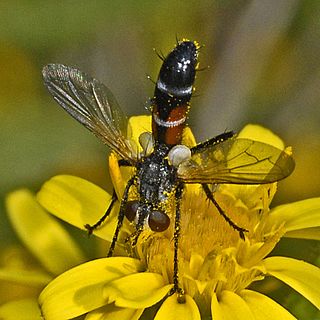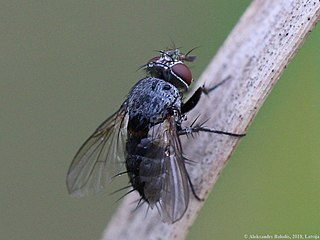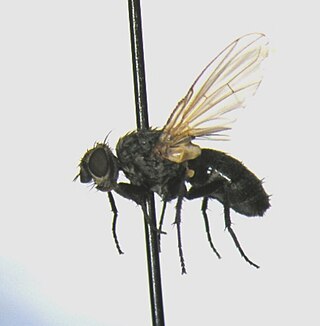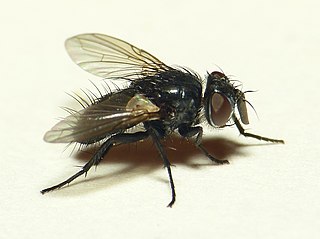Actinochaetopteryx is a genus of tachinid flies in the family Tachinidae. Its members occur in the Palaearctic, Oriental, and Australasian realms.
Ceracia is a genus of bristle flies in the family Tachinidae.

Ceromya is a genus of flies in the family Tachinidae.
Chaetoria is a genus of flies in the family Tachinidae.

Cylindromyia is a genus of flies in the family Tachinidae.
Eustacomyia is a genus of flies in the family Tachinidae.
Glaurocara is a genus of flies in the family Tachinidae.
Drino is a genus of flies in the family Tachinidae.
Palpostoma is a genus of flies in the family Tachinidae.

Peribaea is a genus of flies in the family Tachinidae.

Phytomyptera is a genus of flies in the family Tachinidae.

Prosena is a genus of flies in the family Tachinidae.
Semisuturia is a genus of flies in the family Tachinidae.

Siphona is a genus of flies in the family Tachinidae.

Lophosia is a genus of flies in the family Tachinidae.

Actia is a genus of large flies in the family Tachinidae.

Dexia is a genus of flies in the family Tachinidae. Most larvae are parasitoids of beetles (Scarabaeidae).

Blondeliini is a tribe of parasitic flies in the family Tachinidae. Larvae are parasitoids of other insects, mostly beetles and caterpillars. Although nearly cosmopolitan, its greatest diversity is in the New World and especially in South America.

Eryciini is a tribe of flies in the family Tachinidae.

Tachininae is a subfamily of flies in the family Tachinidae.











